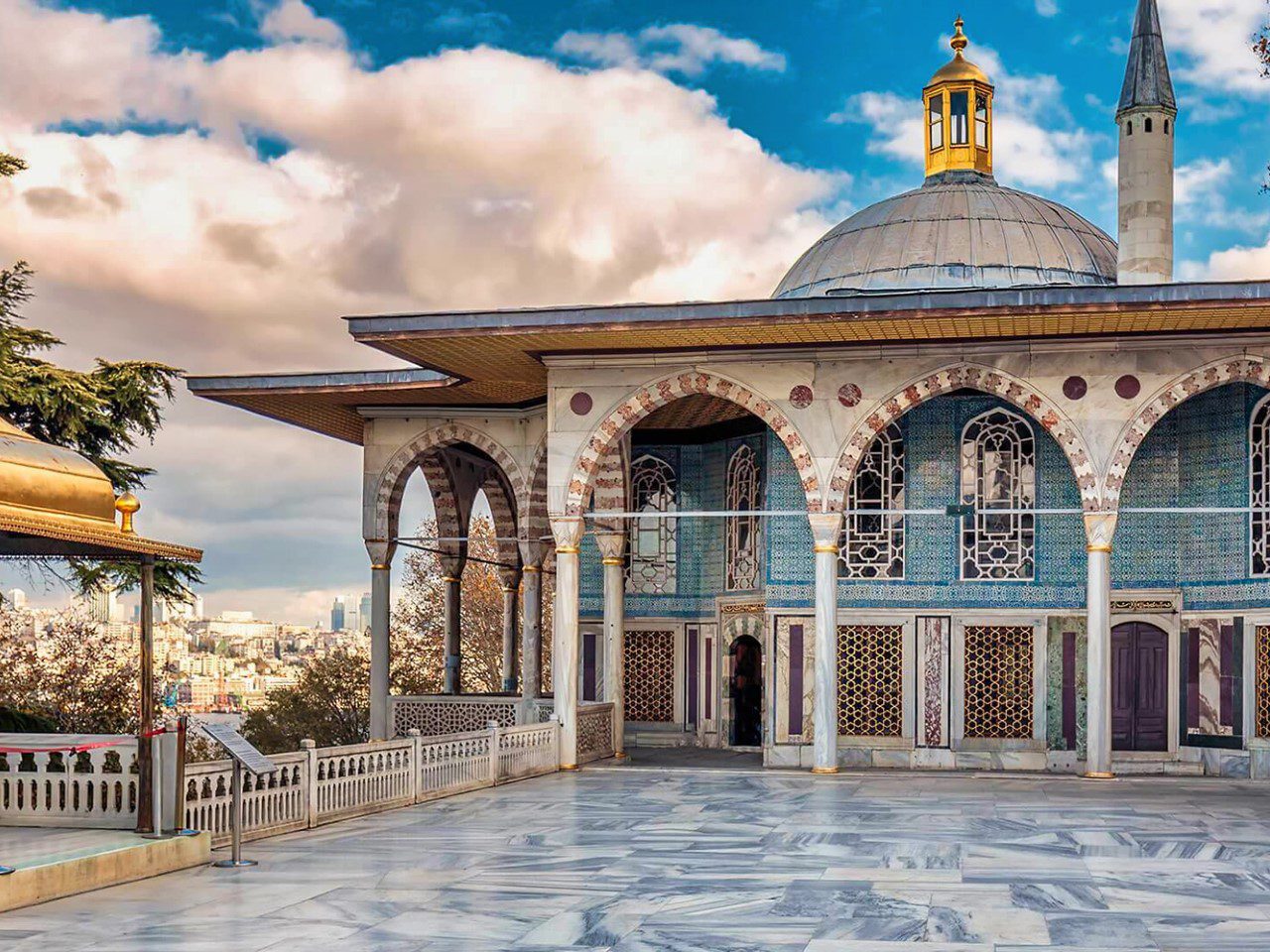The Topkapi Palace is a testament to the grandeur and luxury of the Ottoman Empire. Nestled in the heart of Istanbul, this magnificent palace offers a captivating glimpse into the history, culture, and architecture of a bygone era. From its impressive courtyards and exquisite exhibits to its enchanting Harem, Topkapi Palace beckons visitors to step back in time and explore the rich heritage of Turkey. Join us on a journey of discovery as we unveil the majesty of Topkapi Palace.
Topkapi Palace: The Jewel of the Ottoman Empire
Topkapi Palace, once the residence of Ottoman Sultans and the administrative center of the empire, holds a prominent place in Turkish history. Built in the 15th century, it served as the seat of power for over four centuries, witnessing the rise and fall of the mighty empire. Today, this sprawling complex serves as a museum, housing a vast collection of artifacts that offer insights into the empire’s grandeur and legacy.

Immerse Yourself in Ottoman Splendor
As you step into the enchanting world of Topkapi Palace, you’ll find yourself surrounded by architectural marvels, lush gardens, and captivating exhibits. The palace boasts a unique blend of Ottoman, Byzantine, and Islamic architectural styles, showcasing the empire’s diverse influences. Explore the intricate tile work, ornate domes, and majestic courtyards that adorn the palace, and immerse yourself in the beauty of Ottoman craftsmanship.
Unveiling the Harem: Secrets of Royal Life
One of the highlights of a visit to Topkapi Palace is the opportunity to discover the Harem. Behind closed doors, the Harem served as the private residence of the Sultan’s family and the elite members of the Ottoman court. Step into the opulent chambers, intricate courtyards, and lush gardens that once witnessed the intrigues and secrets of royal life. Uncover the stories of the Sultan’s wives, concubines, and children, and gain a deeper understanding of the intricacies of Ottoman society.

A Journey Through History and Culture
The Topkapi Palace Museum offers a captivating journey through the history and culture of the Ottoman Empire. Discover priceless treasures, including ancient manuscripts, intricate jewelry, and imperial artifacts. Engaging exhibits and informative displays showcase the empire’s military prowess, administrative systems, and cultural achievements. Every corner of the palace unveils a new chapter in its storied past, leaving visitors with a deep appreciation for its legacy.
Plan Your Visit to Topkapi Palace
To make the most of your visit to Topkapi Palace, here are some essential tips:
- Tickets and Tours: Purchase your tickets in advance to avoid long lines and consider guided tours to gain a deeper understanding of the palace’s history and significance.
- Visitor Information: Familiarize yourself with visitor guidelines, including dress codes and photography restrictions. Check the official website for the latest information and frequently asked questions.
- Getting There: Explore transportation options to reach The opkapi Palace, whether by public transportation or an organized tour
- Opening Hours: Check the palace’s opening hours and plan your visit accordingly. Consider arriving early to avoid crowds and have more time to explore.
- Audio Guides: Take advantage of audio guides or mobile apps that offer self-guided tours, providing detailed commentary and insights as you navigate the palace.

Unveiling Topkapi Palace’s Culinary Delights
One aspect of the Topkapi Palace that should be noticed is its rich culinary heritage. The Palace Kitchens offer a fascinating glimpse into the gastronomic traditions of the Ottoman Empire. These kitchens were once a bustling hub of activity, where skilled chefs prepared elaborate feasts fit for the Sultans and their guests. From succulent kebabs and aromatic pilaf to delicate pastries and indulgent sweets, the cuisine of Topkapi Palace reflects the empire’s diverse cultural influences. As you explore the Palace Kitchens, you’ll better appreciate the flavors and techniques that shaped Ottoman cuisine.
Soaking in the Splendor of Topkapi Palace’s Gardens
The gardens of The Palace are a tranquil oasis amidst the bustling city of Istanbul. These meticulously manicured gardens provide a peaceful retreat where visitors can bask in the beauty of nature and take in breathtaking views of the Bosphorus. Stroll along the pathways lined with vibrant flowers and lush greenery, and marvel at the fountains and pavilions that dot the landscape. The gardens also provide an opportunity to appreciate the architectural harmony between the palace and its surroundings. Take a moment to relax on a bench, breathe in the fragrant scents, and let the serenity of Topkapi Palace’s gardens wash over you.

Conclusion
Topkapi Palace is a majestic symbol of the Ottoman Empire, offering a captivating journey through history, culture, and architectural splendor. From its courtyards’ grandeur to the Harem’s secrets, each corner of this magnificent palace tells a story that continues to resonate today. Immerse yourself in the Ottoman legacy and let the wonders of the Palace transport you to a bygone era of majesty and opulence.
Topkapi Palace FAQs:
What are the must-see attractions within Topkapi Palace?
Some must-see attractions within the Palace include the Imperial Treasury, the Harem, the Chamber of Sacred Relics, and the Palace Kitchens.
How long does it take to explore Topkapi Palace?
Plan to spend at least 2-3 hours exploring the Palace to fully appreciate its extensive exhibits and architectural wonders.
Can I purchase tickets online for Topkapi Palace?
Yes, you can purchase tickets online in advance through the official website of the Palace or authorized ticketing platforms.
Are there any special events or exhibitions held at Topkapi Palace?
The Palace occasionally hosts special exhibitions and cultural events. Check the official website for information on upcoming events during your visit.
Is photography allowed inside Topkapi Palace?
Visitors are generally allowed to photograph most of the Palace, except for the Harem and the Chamber of Sacred Relics. However, please note that flash and tripods might have restrictions.



0 Comment